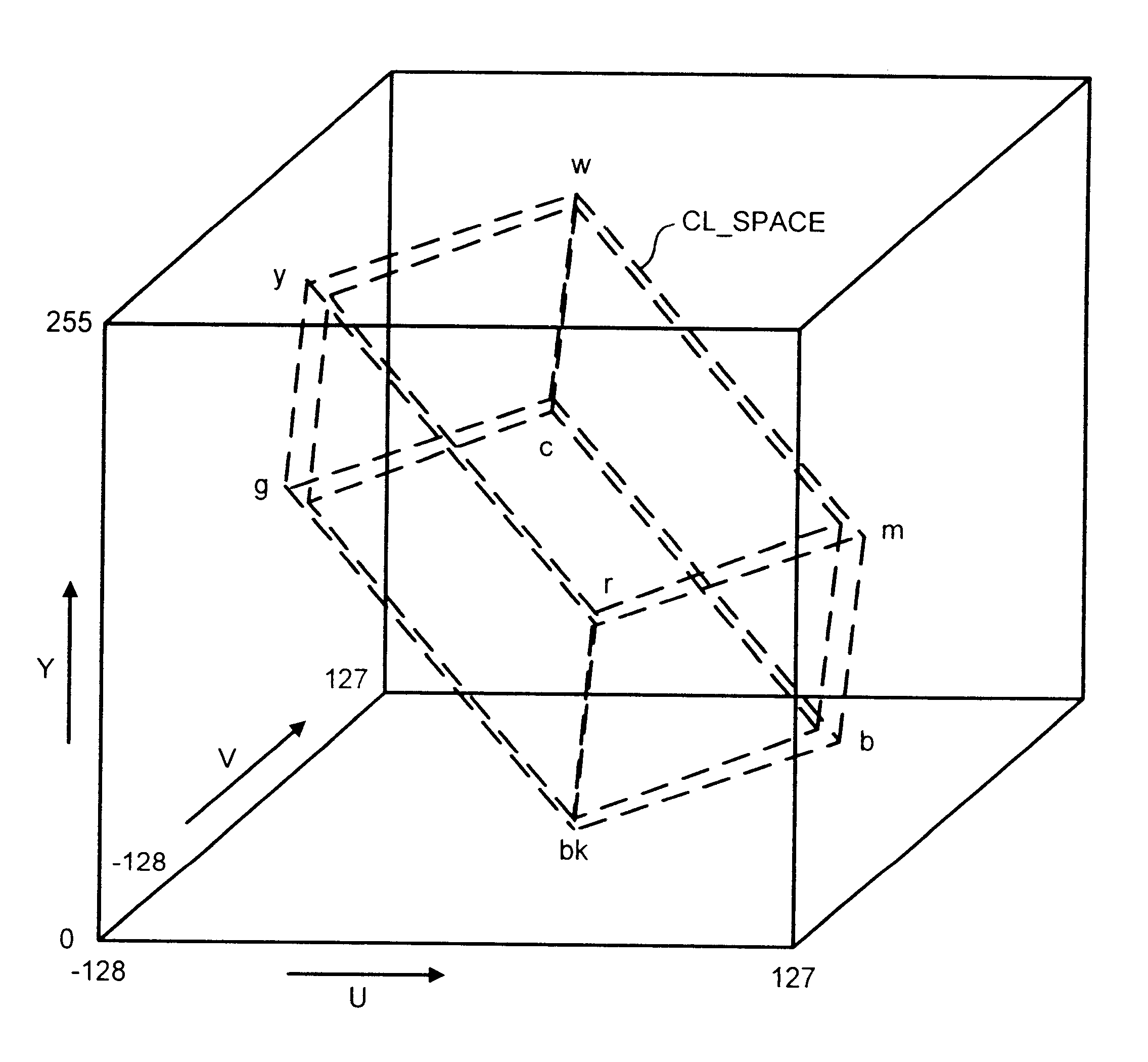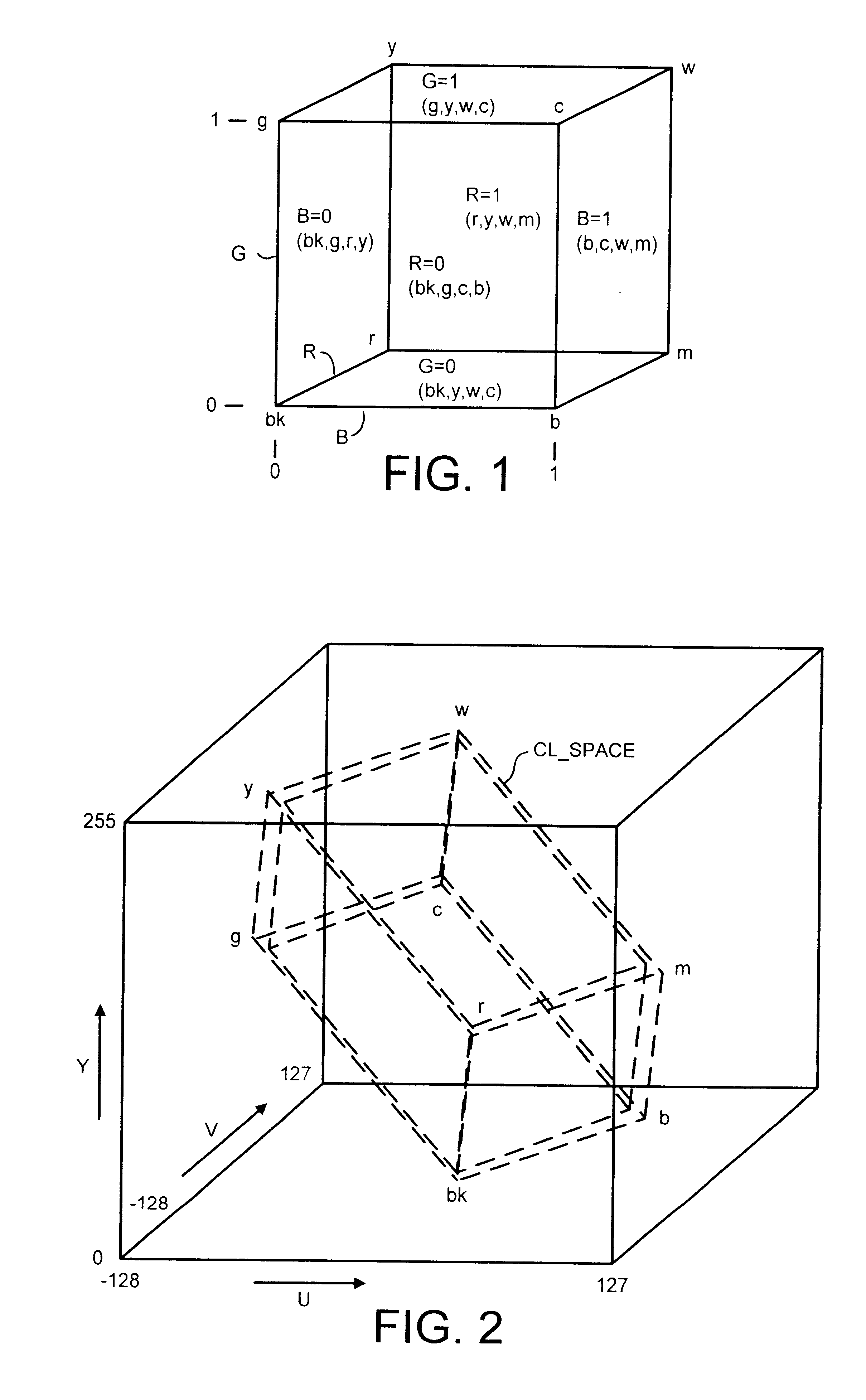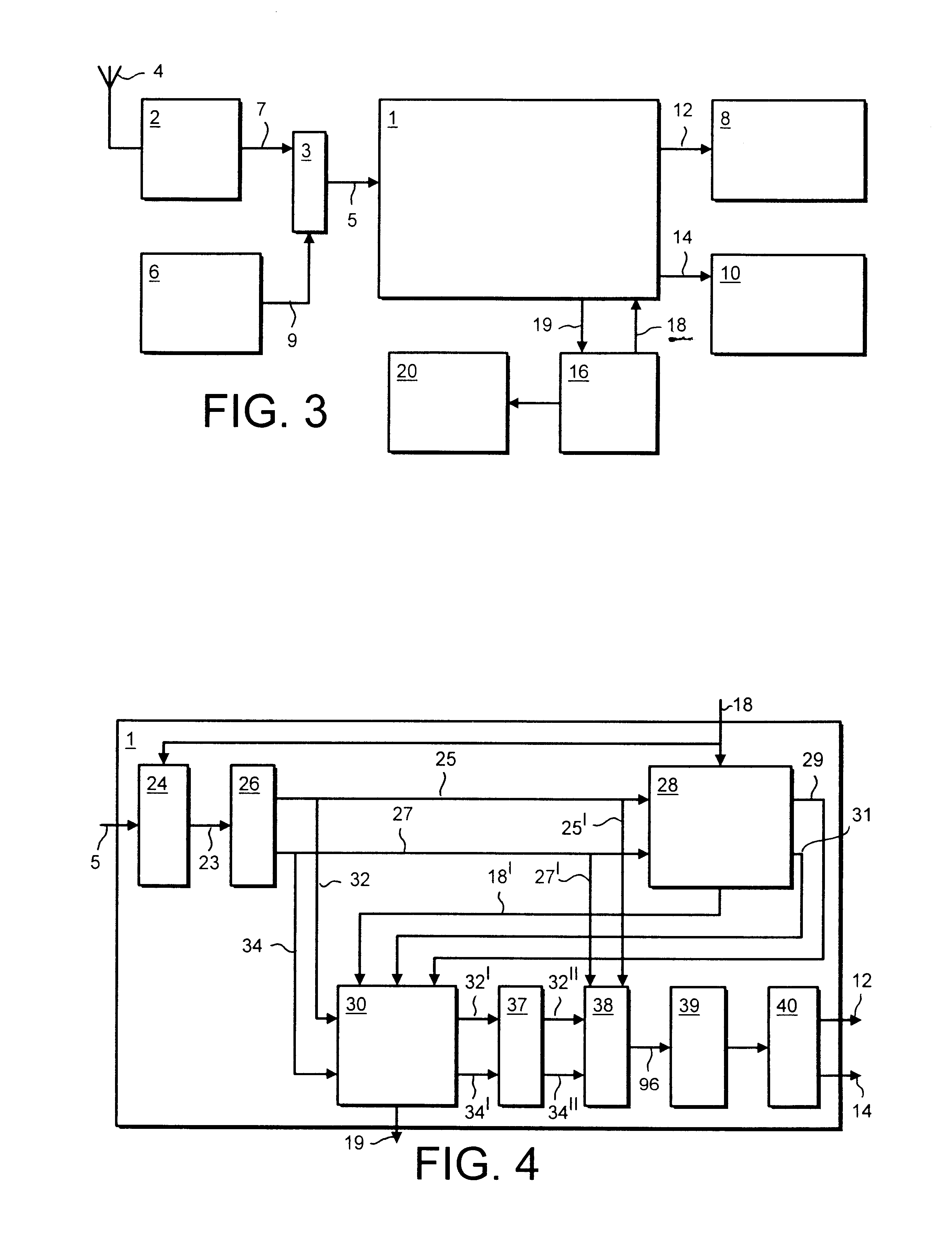Method of processing signals and apparatus for signal processing
a signal processing and signal technology, applied in the direction of color signal processing circuits, instruments, static indicating devices, etc., can solve the problems of illegal pixels being reproduced or processed in unpredictable ways, distortion of video images, and illegal colours being produced
- Summary
- Abstract
- Description
- Claims
- Application Information
AI Technical Summary
Benefits of technology
Problems solved by technology
Method used
Image
Examples
first embodiment
An image processing apparatus which provides a first example embodiment of the present invention is shown in FIG. 4. In FIG. 4, the input samples in YCrCb 4:2:2 format are received from the channel 5 by the image processing apparatus and fed to a colour format processor 24. The colour format processor operates to convert the input signal samples from YCrCb 4:2:2 format into 4:4:4 format, and to produce on an output conductor 23 either RGB colour reference signal samples or colour difference signal samples, in dependence upon control signals received from the control channel 18. The input signal samples in either RGB form or YUV form are fed to an input of an over sampling processor 26, via a connecting conductor 23. As will be explained shortly, the over-sampling processor 26 operates to generates an over sampled version of the input signals samples which is represented as base input signal samples corresponding to the original sampling points of the input signal, and extra sampling...
second embodiment
A second embodiment of the present invention will now be described with reference to FIG. 11 where parts also appearing in FIG. 3 bear the same numerical designations. In FIG. 11, the image processing apparatus 1 is shown to receive the input signal samples via the channel 5 and as with the first embodiment, these signal samples are in the CCIR-601 YCrCb 4:2:2 format. The input signal samples are first fed to a colour conversion processor 110 which operates to scale the signal samples corresponding to the two CrCb chrominance signals so that they are converted to the of form of the two UV chrominance signal samples. Furthermore to allow for quantisation errors which may occur in the input signal samples the word length with which each of the input signal samples is represented increased from ten bits to fifteen bits. This provides an increased resolution from which quantisation errors and rounding effects can be detected and processed, so that these errors can be avoided. Coupled to...
PUM
 Login to View More
Login to View More Abstract
Description
Claims
Application Information
 Login to View More
Login to View More - R&D
- Intellectual Property
- Life Sciences
- Materials
- Tech Scout
- Unparalleled Data Quality
- Higher Quality Content
- 60% Fewer Hallucinations
Browse by: Latest US Patents, China's latest patents, Technical Efficacy Thesaurus, Application Domain, Technology Topic, Popular Technical Reports.
© 2025 PatSnap. All rights reserved.Legal|Privacy policy|Modern Slavery Act Transparency Statement|Sitemap|About US| Contact US: help@patsnap.com



